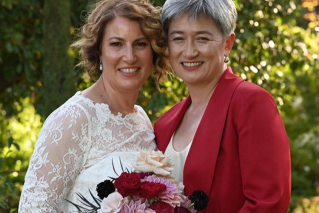We don’t know if breastfeeding is rising or falling in Australia. That’s bad for everyone

The coronavirus has stalled an important project for Australian mothers and their babies. Photo: Getty
As the COVID-19 pandemic has taught us all too well, good health policy depends on planning, decisive action and a willingness to spend money.
But there’s another area where Australia’s willingness to plan and spend has fallen far short: Monitoring breastfeeding rates.
A newly released international report reveals that 41 per cent of babies worldwide are exclusively breastfed for their first six months – well short of the World Health Assembly’s target of 50 per cent by 2025.
Australian data is missing from the latest report because the infant feeding data has not been collected.
Breastfeeding is important, just like immunisation.
It protects children against illness and disease, such as gastroenteritis and later-life diabetes.
Women who breastfeed are less likely to suffer breast cancer in later life.
Investing in breastfeeding will save the health system money in years to come.
In 2019 a long-awaited Australian National Breastfeeding Strategy proposed a national monitoring system for breastfeeding rates.
Governments have been talking about this for nearly two decades. Yet still there is no funding available for a national data collection network, despite its importance for women and children.
Without rigorous data, we can’t tell whether Australia’s breastfeeding rates are improving or getting worse, which groups of people need help, or whether existing programs to encourage breastfeeding are working.
Good data is crucial for good health care
Some local data in NSW and Victoria suggest that in recent years fewer women get off to a good start with exclusive breastfeeding.
The percentage of babies fully breastfed at the time of discharge from hospital in NSW fell from 82.1 per cent in 2011 to 72.3 per cent in 2018.
We also don’t know how COVID-19 has affected breastfeeding rates.
Some women have been hindered by reduced access to breastfeeding support, as hospitals and community services divert resources towards dealing with the pandemic.
On the other hand, there are anecdotal reports of mothers enjoying the less hectic pace of life during lockdown to establish breastfeeding.

A national breastfeeding strategy was launched last year, but COVID-19 has derailed surveying plans. Photo: Getty
But the problem is, without routine surveys of breastfeeding rates among large samples of the population, we just don’t know.
In 1995, 2001 and 2005, National Health Surveys collected data on infant feeding.
In 2008 one of us (Lisa), together with colleague Susan Donath, used this data to show that breastfeeding rates did not improve, and the gap between high- and low-income families had widened during the decade spanned by these surveys. It was a shocking indictment.
Despite this, the 2007-08 National Health Surveys did not collect infant feeding data.
The 2014-15 and 2016-17 surveys each only collected infant feeding data on about 1500 children – not enough for a rigorous analysis of the nationwide trend.
Australia’s first and only comprehensive infant feeding survey happened in 2010, in response to a recommendation from the Parliamentary Best Start Inquiry.
This survey sampled 52,000 infants aged up to 24 months.
It was intended as a baseline for future surveys, but the follow-up surveys never happened.
The National Breastfeeding Strategy released last year by federal, state and territory governments pledged to routinely collect data on breastfeeding rates via the Child Digital Health Record program, which is still under development.
It also promised to deliver a full nationwide survey every five years.

There’s a global goal to have 50 per cent of babies breastfed in their first six months of life.
Knowledge is power
Routine data collection has several advantages.
It is more cost-effective than standalone surveys, and it is population wide, meaning it can include people who are otherwise under-represented in survey data.
It is also a powerful research tool.
Routine data on pre-term versus full-term births in Belgium, for instance, revealed the dramatic effect of tobacco control policies on preventing premature births.
Australia already routinely collects childhood health data, perhaps most notably on immunisation rates.
Policy makers can use this valuable data to ensure adequate coverage against childhood infections and to ensure existing policies are effective.
This article is based on a presentation hosted by the Crawford School of Public Policy, Australian National University, and Save the Children.![]()
Lisa Amir, Professor in Breastfeeding Research, La Trobe University and Julie P. Smith, Honorary Associate Professor, Australian National University
This article is republished from The Conversation under a Creative Commons licence. Read the original article.








